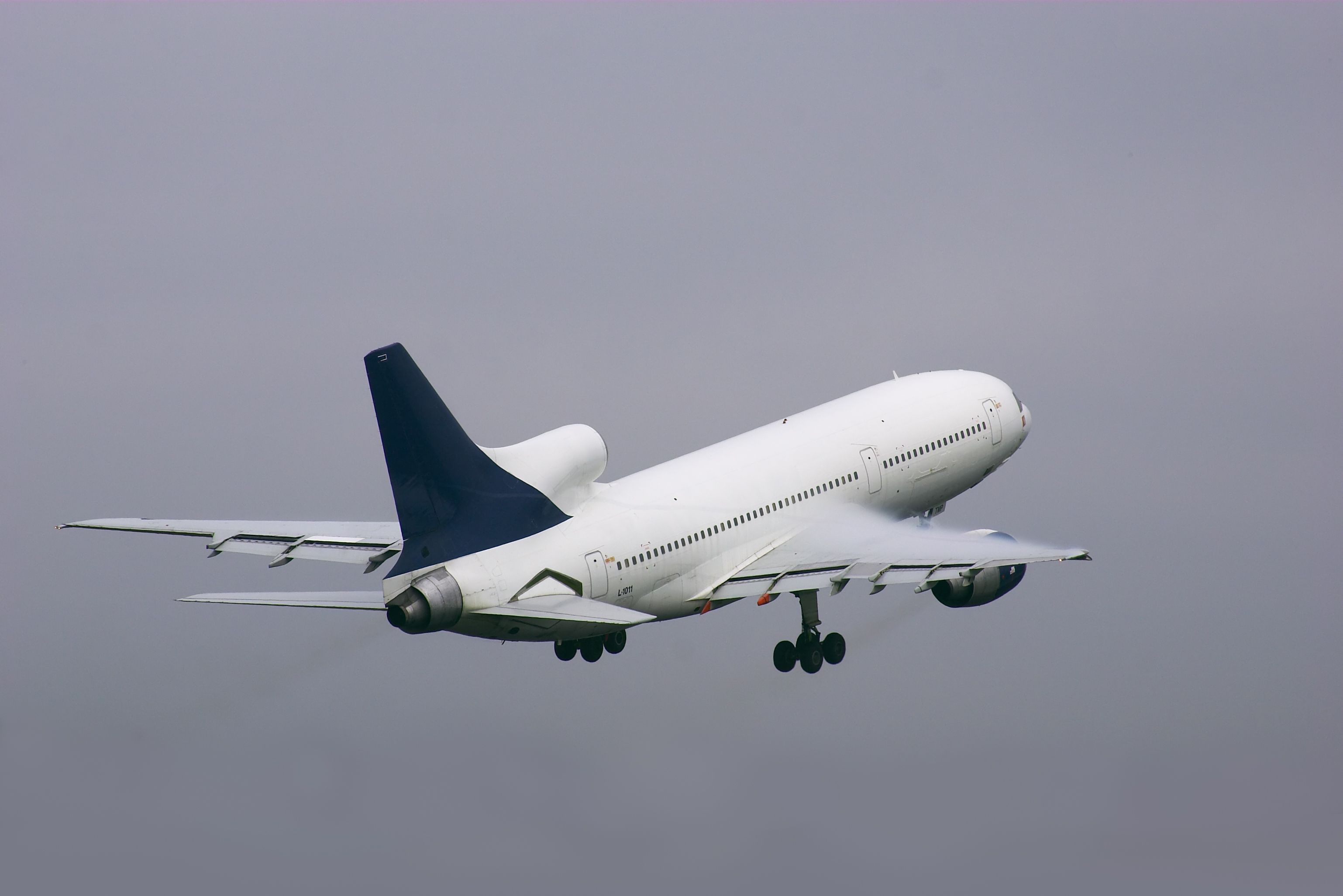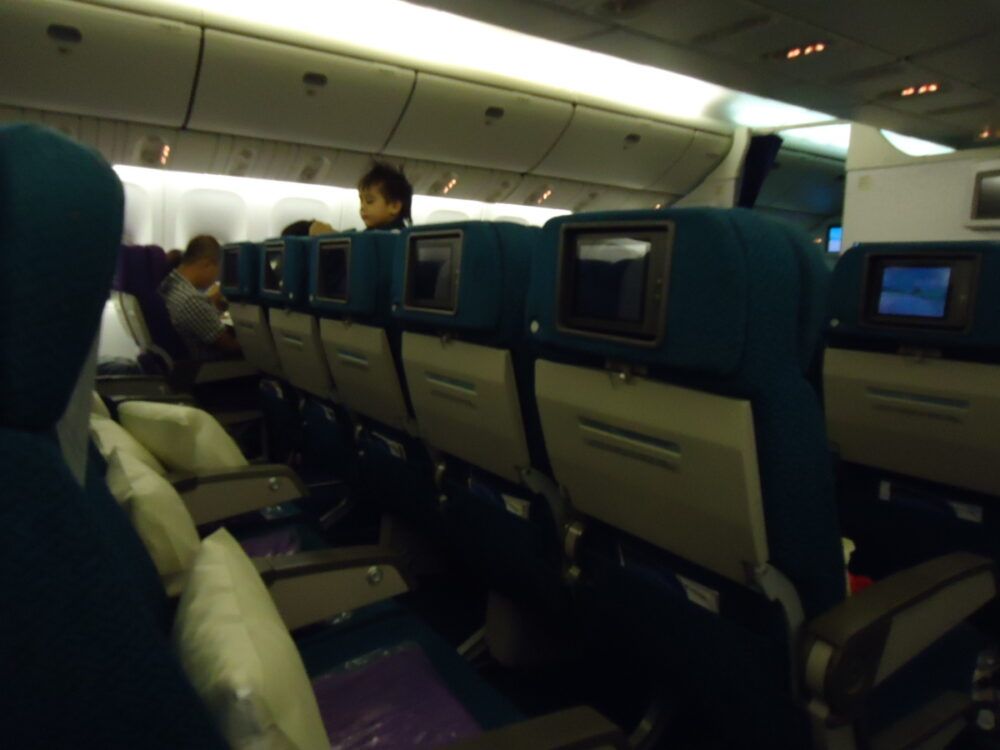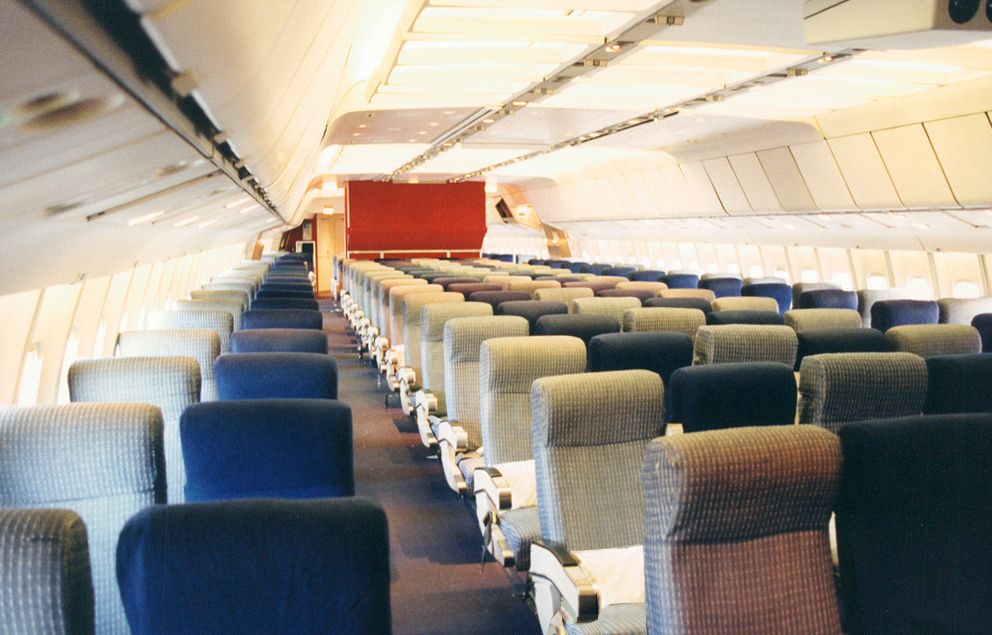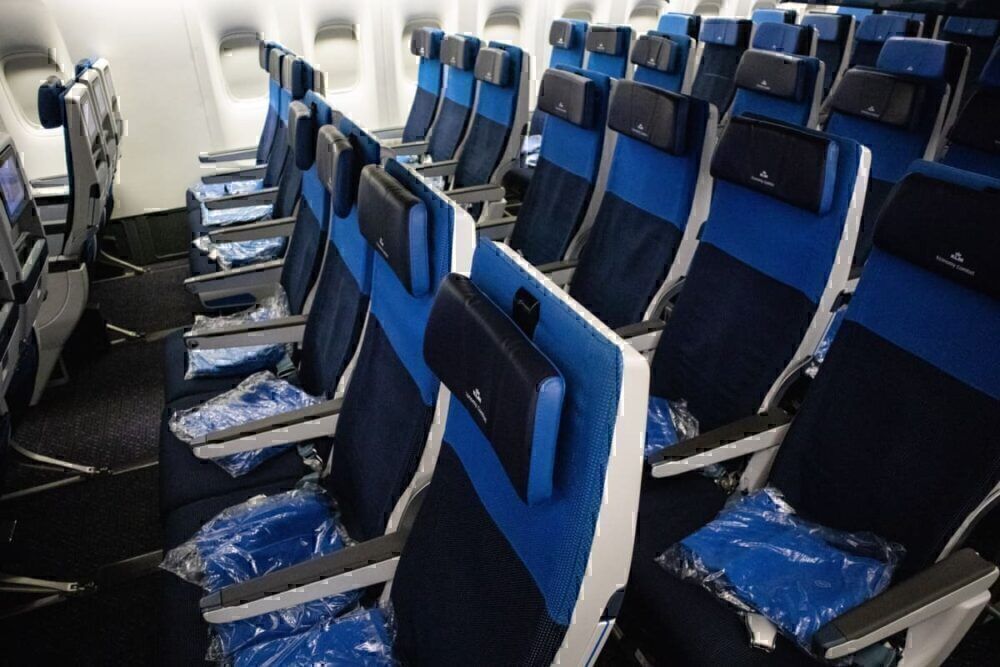Nowadays, most passengers expect one of several standard economy class seating configurations onboard widebody jetliners. These include 2-3-2, 2-4-2, 3-3-3, and 3-4-3, depending on the exact aircraft type in question. However, not too long ago, some twin-aisle jets also had a 2-5-2 economy configuration. Why do we not see this seating configuration anymore, and was it any good?
The logic
While 2-5-2 sounds like a surprising configuration now, there is a logic to it. The two seats on either side allow couples or those traveling together not to have to sit with a stranger. Nowadays, we see that pairs of seats are among the most valued by economy passengers. The middle row of five makes sense for families who would rather sit together than split up, as larger groups would in other cabins.
However, as expected, there is a significant drawback to this configuration. Namely, the person in the middle seat of the five has to cross over at least two seats of people to exit the row. While this is fine for families, it might be awkward for a solo traveler to ask half the row to move so they can exit. This is similar to window seats in a 3-3-3 configuration, but comes without the benefit of the window.
Love aviation history? Discover more of our stories here!
That being said, the logic of this configuration remains simple. Specifically, only one passenger has to cross over two passengers to get to the aisle, unlike in a 3-3-3 configuration where two window seat passengers have to do so. In this regard, it could actually be seen as a more favorable layout in terms of nine-abreast seating.
Which aircraft had this layout and why?
This seating configuration could typically be found onboard certain older widebodies, such as the McDonnell Douglas DC-10 and the Lockheed TriStar. The reason for this, according to a message board on Airliners.net, was that it was much easier to add new seats to the center rather than reposition both of the side seats.
Several airlines also opted for this layout in economy class onboard their Boeing 777s. The 777 was an interesting example, as it wasn't initially considered to have enough space for the 747s standard 3-4-3 layout, but it had more space than the 767's 2-3-2 layout. Airlines mainly used the 2-5-2 seating on their 777-200s.
Want answers to more key questions in aviation? Check out the rest of our guides here!
A few airlines with this configuration included the likes of American Airlines, Malaysia Airlines, Thai Airways, and United. However, you're unlikely to see this layout anymore, with most airlines either retiring or refurbishing their older 'non-ER' Boeing 777s. As such, 2-5-2 seating has been consigned to the history books.
For the empty middle seat!
Another interesting reason for this configuration is the odds of having the middle seat empty. If airlines avoided filling in the middle seat, it would take an 89% load factor to start filling these seats (not counting families). Compared to 3-3-3, where it only takes 67% to start filling the middle seats, this was a great idea. As such, passengers would often end up in a 2-2-2-2 layout, rather than a full 2-5-2.
This was the reason that United Airlines opted for this configuration, according to the message board, and it retained the layout all the way until its early 777s. The airline's frequent flyers wanted the highest chance of having an empty seat next to them in the middle, which, interestingly enough, was most likely in this layout.
Will it ever return?
This layout was phased out with the entry of the next-generation 777s, and was replaced by either the higher capacity 3-4-3 layouts or just a standard 3-3-3 configuration. The 2-5-2 configuration was unique, with its pros and cons, but what are the chances of it potentially making a comeback on a widebody someday?
As it happens, Simple Flying examined this in 2020. A key negative of 2-5-2 compared to 3-3-3 is that, to provide screens at every seat, an extra controller box would be required per row, due to these only powering three screens. However, with inflight WiFi and 'bring your own device' on the rise, this could help 2-5-2 return.
Which layout would you prefer out of 2-5-2 and 3-3-3 when it comes to nine-abreast economy class seating? Have you ever flown in either of these configurations? Let us know your thoughts and experiences in the comments!
Source: Airliners.net




